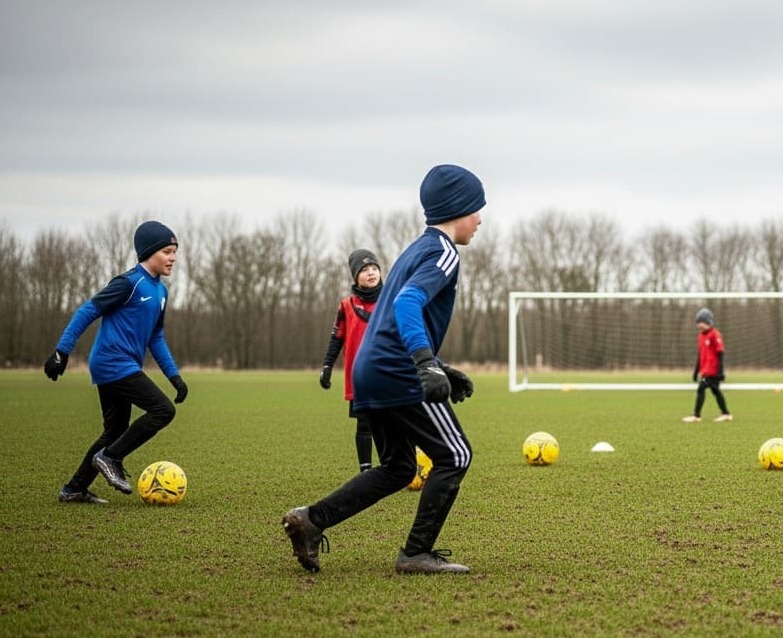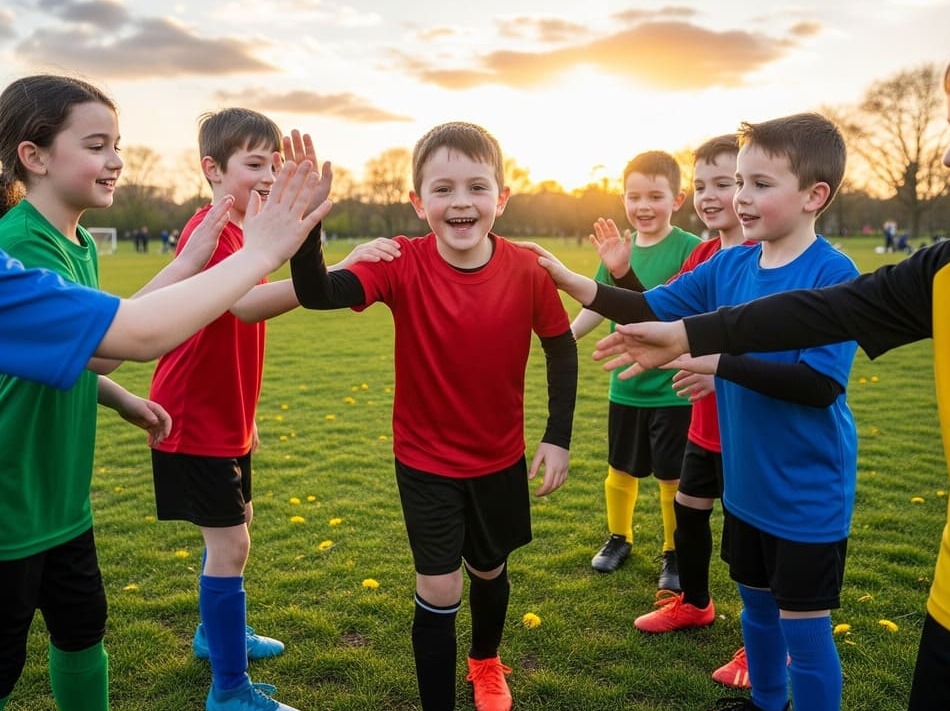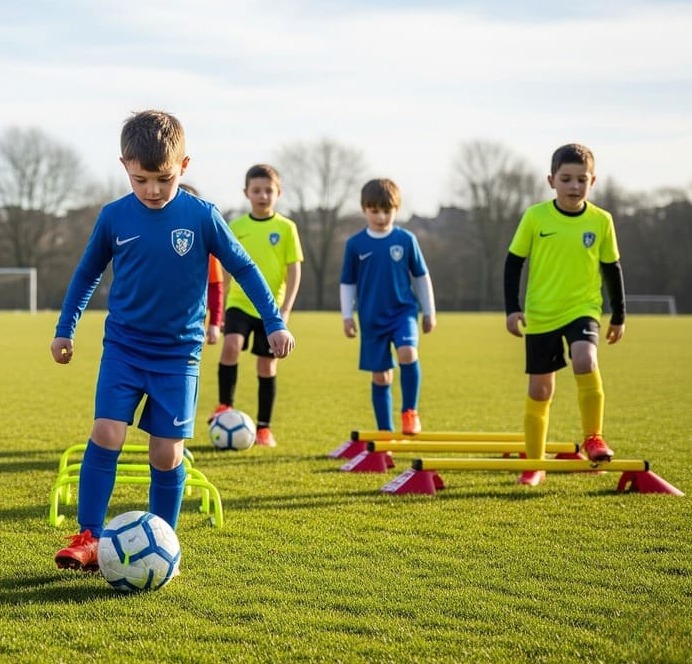How to Develop Decision-Making Skills in Young Footballers
Scenario-based learning brings the game into training, turning drills into real match moments. By blending imagination with skill practice, children learn to think and act under pressure in safe, structured sessions. These football decision making drills for youth make training feel alive, engaging young players’ curiosity while sharpening instincts that last well beyond the pitch.
1. Enhance Real-Time Decision Making with Football Drills
Real-time decision-making drills let children practise choices they’ll face in games. Coaches can pause play briefly, asking players: “What’s your next move?” This reflective pause builds sharper instincts, giving kids confidence to dribble, pass, or shoot in seconds. Sessions improve mental agility as much as footwork, helping children react faster and make smarter calls under pressure.
a) Under-11s Final Comeback Scenario
In an under-11s session, imagine trailing by a goal with five minutes left. Do players push forward aggressively, or regroup and build calmly? This game-like tension fuels focus and teamwork. Children gain confidence by choosing and executing a plan under a countdown clock. Parents see not just football skill, but resilience and tactical growth in action.
b) 2v1 Breakaway Decision
Set up two attackers versus one defender in a small grid. The attackers must decide whether to dribble, pass, or hold possession. This simple scenario strengthens vision, awareness, and creativity. Coaches add quick debriefs: “Which option felt right?” Over time, players anticipate choices naturally, and shy children find their voice in tactical discussions.
c) Last-Second Corner Strategy
Picture a final corner kick with the whistle about to blow. Attackers select near-post, far-post, or supporting roles; defenders organise to block them. Children experience the thrill of high-pressure play without the stakes of a real match. Afterward, a reflective question - “What would you change?” - boosts learning and confidence for future games.
2. Develop Football Skills Through Scenario Drills
Scenario training isn’t only about tactics; it also layers technical skills. A bouncing-ball challenge teaches foot control and quick reactions. A three-second possession countdown builds composure and vision. These variations keep sessions fresh and exciting, combining ball mastery with decision puzzles that parents love to see in structured youth coaching.

3. Build Confidence with Football Coaching for Kids
Effective football coaching and drills turn hesitation into confidence. Children rotate roles, lead discussions, and review outcomes in calm debriefs. By practising choices without fear of failure, young players learn that mistakes are stepping stones. This safe environment creates decisive athletes who carry their confidence into both matches and everyday life.
4. Summary and Next Steps for Football Training
Scenario-based drills make football training for 8-10 year olds both challenging and playful. Short, focused sessions sharpen decision speed, teamwork, and resilience. Parents can join post-session debriefs, helping children reflect on progress and celebrate growth. Over time, kids even invent their own scenarios, proving the power of curiosity-led learning.
At We Make Footballers, scenario-based coaching is part of our DNA. With 106 academies across the UK, we train more than 12,000 children every week in small groups of 10 per coach. Our sessions balance fun themes with structured drills, and our pathway has already helped over 250 players progress into professional academies. Book a free trial today and see how decision-making, creativity, and confidence grow together in the right environment.



